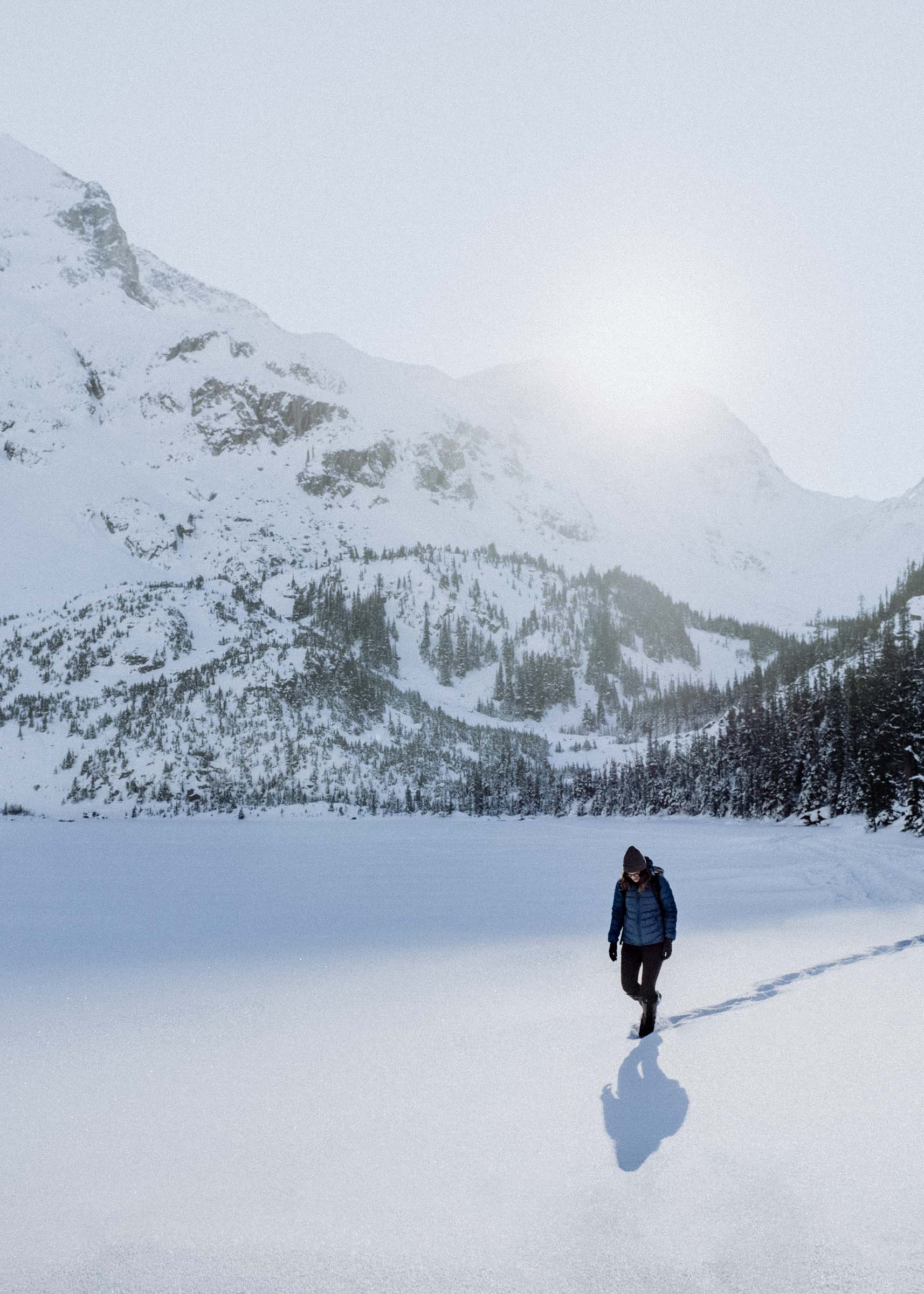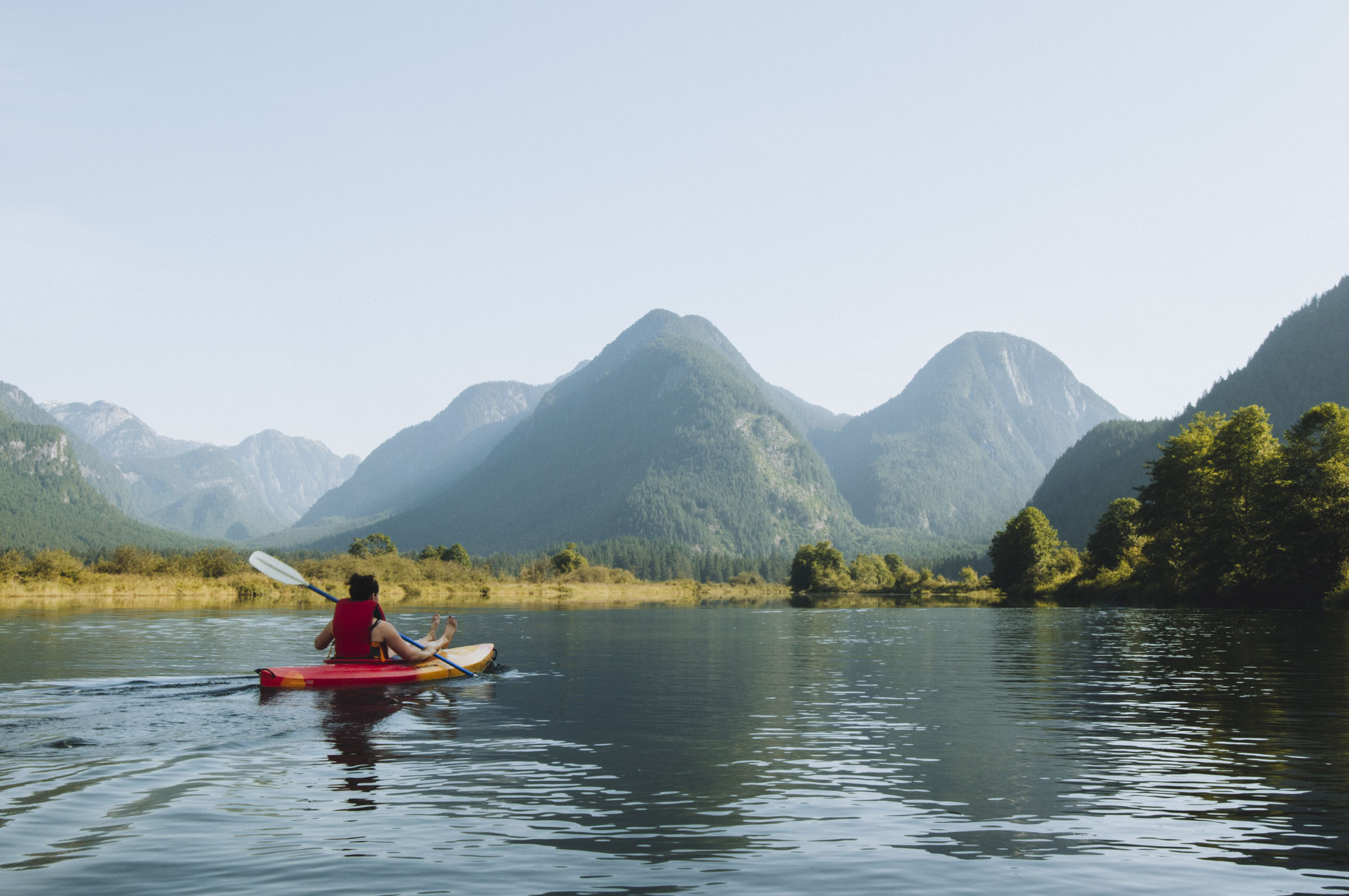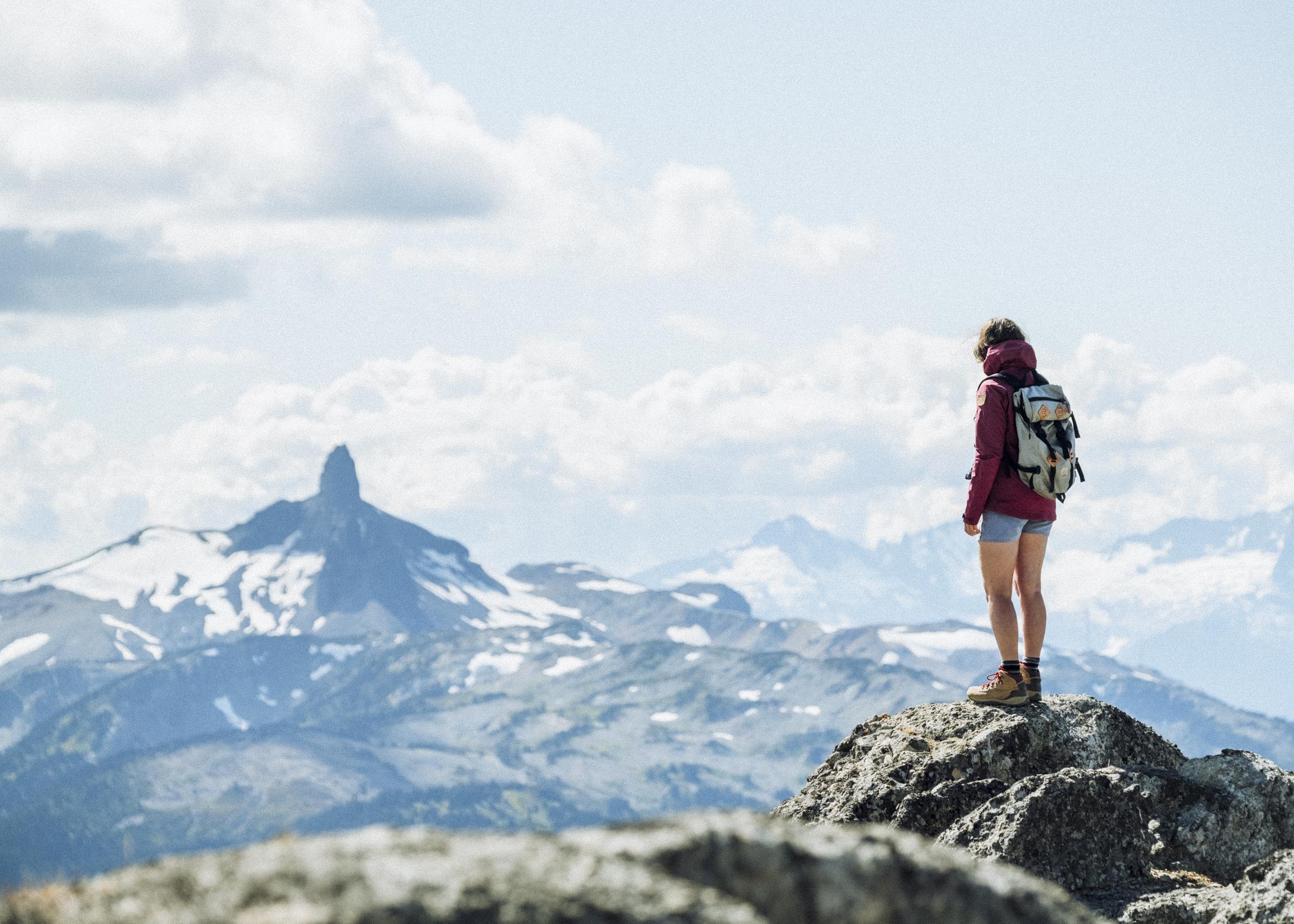Musical Bumps
Hiking Whistler's High Note & Singing Pass Trails
Whistler is a world-famous winter destination, and pretty spectacular in the summer months too. High mountain trails abound on all sides of town — from quick forest jaunts to deep wilderness slogs, there is something to pique every interest and satisfy every skill level.
Singing Pass is somewhere in the middle of that spectrum, being popular, well-maintained, easy-access trails far enough off the beaten path to offer a remote and rugged feel. You get sweeping views of pristine peaks and verdant valleys, bright blue lakes, shrouded glaciers, and sheer rocky mountains all along an open, desolate, rolling ridge. This is one of the best hikes in the area.
BEFORE YOU GO

These trails were some of the first hikes Megan and I did together when we first met in 2009, and we were eager to revisit them with our friends Adriana and Adam Sinke. The open and autumnal yellow terrain contrasting against the distant blue glaciers had left an impression. In our memories it was an unparalleled easy hike for the payoff in expansive views and vistas. In the intervening years I had often considered it one of my favourite Vancouver hikes. I was excited to go back.


The ease of ascending into the alpine via the Whistler gondola is something. There are no dusty dirt roads, no remote parking lots, no long and arduous climbs. You just hop into a little metal and glass box down at the Village, sit down, and idly watch the trees and mountain bikers pass beneath your feet, arriving in the company of clouds 20 minutes later. You get to save your energy for tramping above the treeline.
In 2009 we had hiked it as a loop, ascending via the gondola in the morning and descending the long forested (and, in our opinion, forgettable) Singing Pass trail down Fitzsimmons Valley by evening. At over 20km it was a somewhat substantial day hike (we lost a few hours to a substantial and delicious huckleberry patch on the High Note) and the descent seemed gruelling and endless. This time we would hike beyond Singing Pass to overnight at Russet Lake, then skip the trail down in favour of retracing the Bumps and taking the gondola both ways. We would hike the same section twice, but it would be a prettier hike and it would save our knees. Win win.


PIKA'S TRAVERSE
Off to a somewhat late start, we were already a couple hours behind schedule when we disembarked from the gondola to discover that the second chair, the one to the trailhead, was closed and we'd have to hike the rest of the way up. Our bad: we hadn't even thought to check. But no big deal, really — the main gondola had gotten us up most of the way already, and we only had 2.3 km (300m elevation) to make up. We had a few trail options but I really wanted to see the High Notes' view over Cheakamus Lake so we opted for Pika's Traverse up to the summit (a veritable snow canyon in early summer, but by fall a rough rocky access road littered with quartz crystal) to the Half Note, connect up with the High Note, then on to the Musical Bumps. It might sound confusing, but don't worry, there are maps here and there and all trails are well marked. We decided our route on the fly without any trouble at all.
As a bonus, some of the views from Pika's Traverse were truly astounding — the barren red slopes of the Bumps' Flute and Piccolo summits, the long view of ancient and rusting Fissile and Overlord in among the newer mountains. The landscape is so barren, so desolate, just rock and ice and yawning distance.

HIGH NOTE TRAIL
The High Note Trail is another splendour. You hike along the far flank of Whistler and Piccolo mountains high above the startling bluegreen of Cheakamus Lake, looking out at Black Tusk and the glacier-laden McBride range. It's a beautiful trail, and I'm told that in early August the hillside is ablaze with every colour of wildflower.
But my favourite views start after you leave the High Note, cross the Garibaldi park boundary, and ascend Flute Summit. This is when the landscape really opens up. From here the going is more even, flatter, open. You can see for miles in every direction, and every direction is a marvel. Continuing along the flat ridge, the trail dips a bit before taking you up the smaller Oboe bump, then down again into Singing Pass.
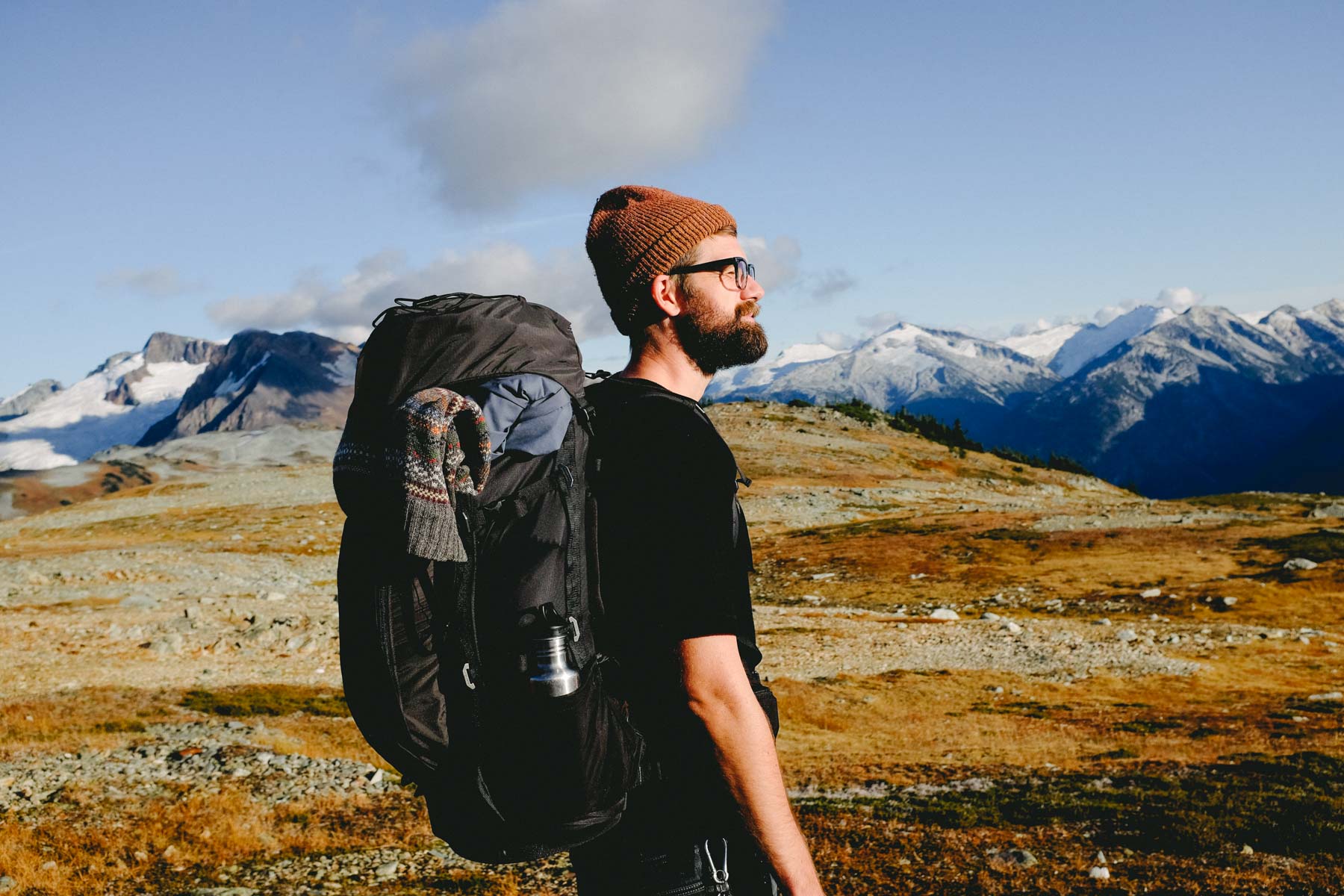

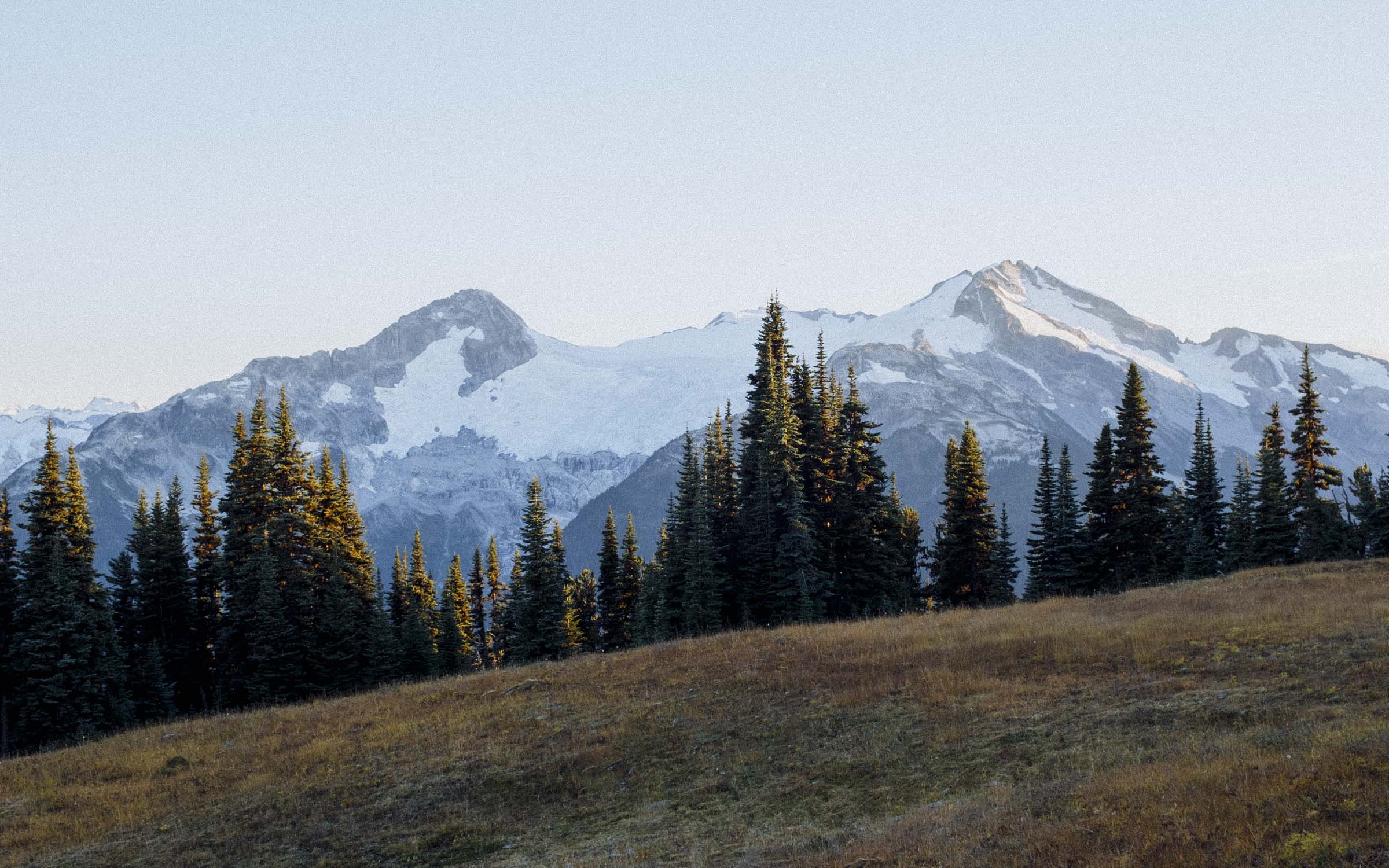
MUSICAL BUMPS
The sun was nearing the horizon by the time we started descending into Singing Pass, casting the landscape in a musky orange light with long strong shadows, and by the time we reached the Russet Lake junction it was well into dusk. With two of our party tired and recovering from illness we briefly considered setting up camp there, but we were low on water and high on resolve and continued on, hiking the remaining 7km by flashlight.
I love hiking in the dark. It's such a different experience. The faint orange glow over the mountains, the way colours are slowly bleached one by one from the landscape, the deepening dark, the haunting hoot of nearby owls, the cool sweep of evening wind, the first and sudden stars. You're a little bubble of light in a deep black landscape, feeling at once both secure in that bubble and vulnerable, never fully knowing what's around you.
We climbed the last hill, rounded a rocky rubble bend, and felt an emptiness looming out below us. And then... that! there! the twinkle of a little light in the Himmelsbach Hut, way off in the distance, beside a lake filled with stars. We had made it.

RUSSET LAKE
We prepared dinner beside the hut, putting on all our thermal layers as the cold damp mountain air bit into us. Mice darted in and out of our circle of light, looking for any food our numbed hands might have let slip. After dinner Adam and Adriana retired to the hut, while Megan and I set up our tent in the rocky field and sat out for a bit. We tried taking some photos of the stars on the water, over the tent, out beyond the mountains, but it was a little tricky without a tripod and frost was forming on our jackets, nipping our fingers. We turned in at 11pm for cold night in our little tent.



A downside of hiking in at night is that you don't get to see your camp in the glow of sunset, but I like to think that the surprise morning view almost makes up for it. Getting out of bed on a cold morning isn't always my favourite part of the day, but in an unknown and unseen mountain landscape clambering out of your warm cocoon can be a true delight.
We couldn't really see Russet Lake from camp and the shadow of Fissile wasn't much to look at with the sun blaring behind it, but the view out towards the Overlord Massif and down along the Fitzsimmons Range and the Blackcomb backcountry was pretty good. You could see the receding end of the Overlord Glacier, along with its startlingly large lateral moraines. So neat! But my favourite views were of the hut itself — such a cute little thing! And of course the views from the outhouse.
And of course the slow bubbling pleasure of watching our coffee brew.

BACK TO THE BUMPS
Adriana and Adam got a head start up the hill while Megan and I stretched the morning out a bit, letting the tent dry in the morning sun and taking a few more photos. It's always hard to leave such places, but we had a gondola to catch and work the next day, so push on we must.
We caught up with them at the Singing Pass junction. Thinking they wouldn't be able to hike fast enough to make the last gondola they decided to part ways and hike down the Singing Pass trail to the village. We continued on, eager to be back on the Bumps once again.


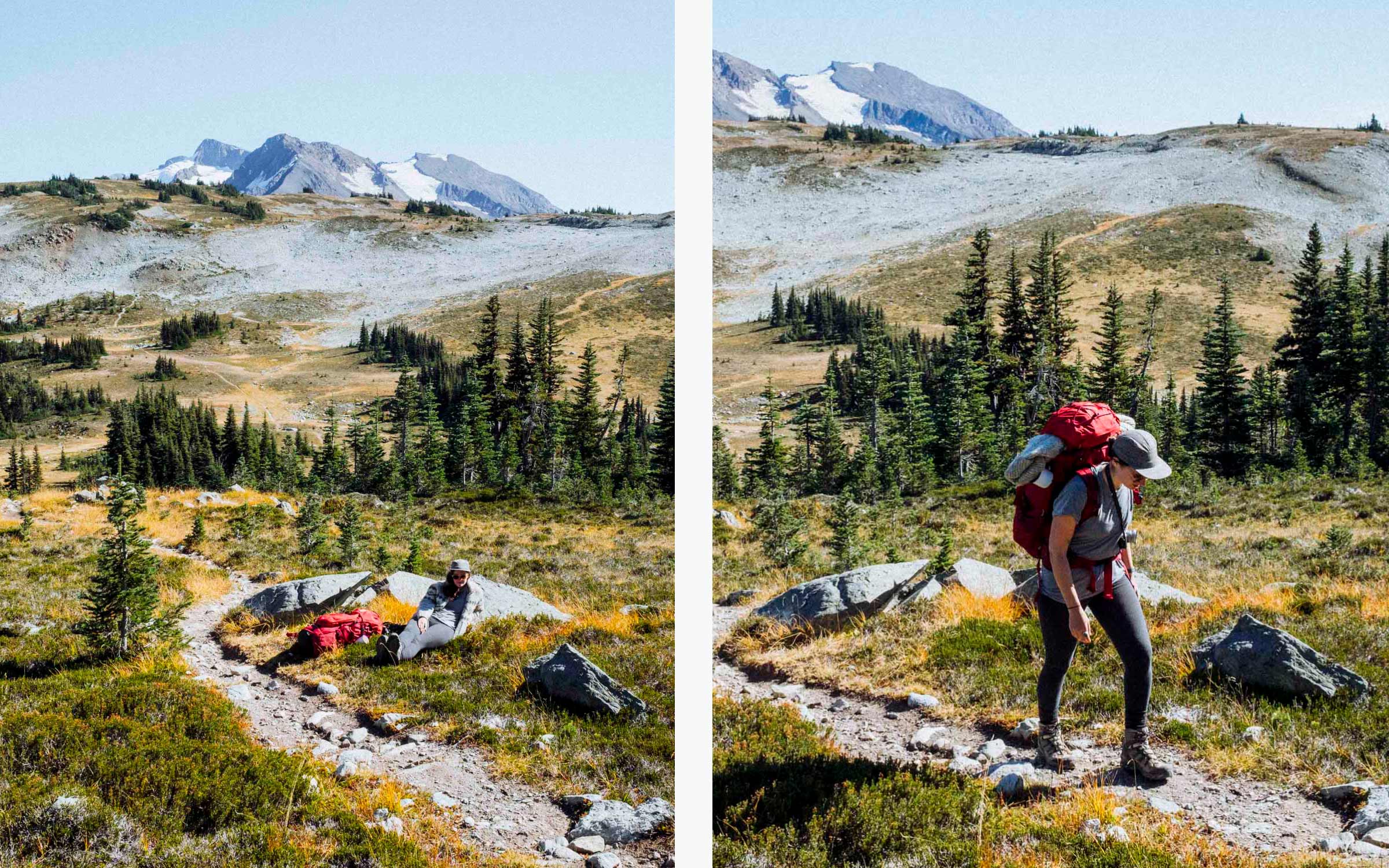

ENDING ON THE HIGH NOTE
It was hot and hilly and we were on a schedule, but these are landscapes you can enjoy in any circumstance. The mountains are stunning, and a perfect excuse to take much needed rests at the crest of every hillock.
After Flute you descend back down to the High Note. This time we'd be hiking the second half, down into Symphony Bowl and around the eastern side of Whistler Mountain back to the gondola. As you approach the lift you start seeing more and more people, which is comforting in a way but it also makes changing into your swimsuit for a brisk dip in Symphony Lake something of an awkward experience. But swim you must! You have a steep hill ahead. A very steep hill.
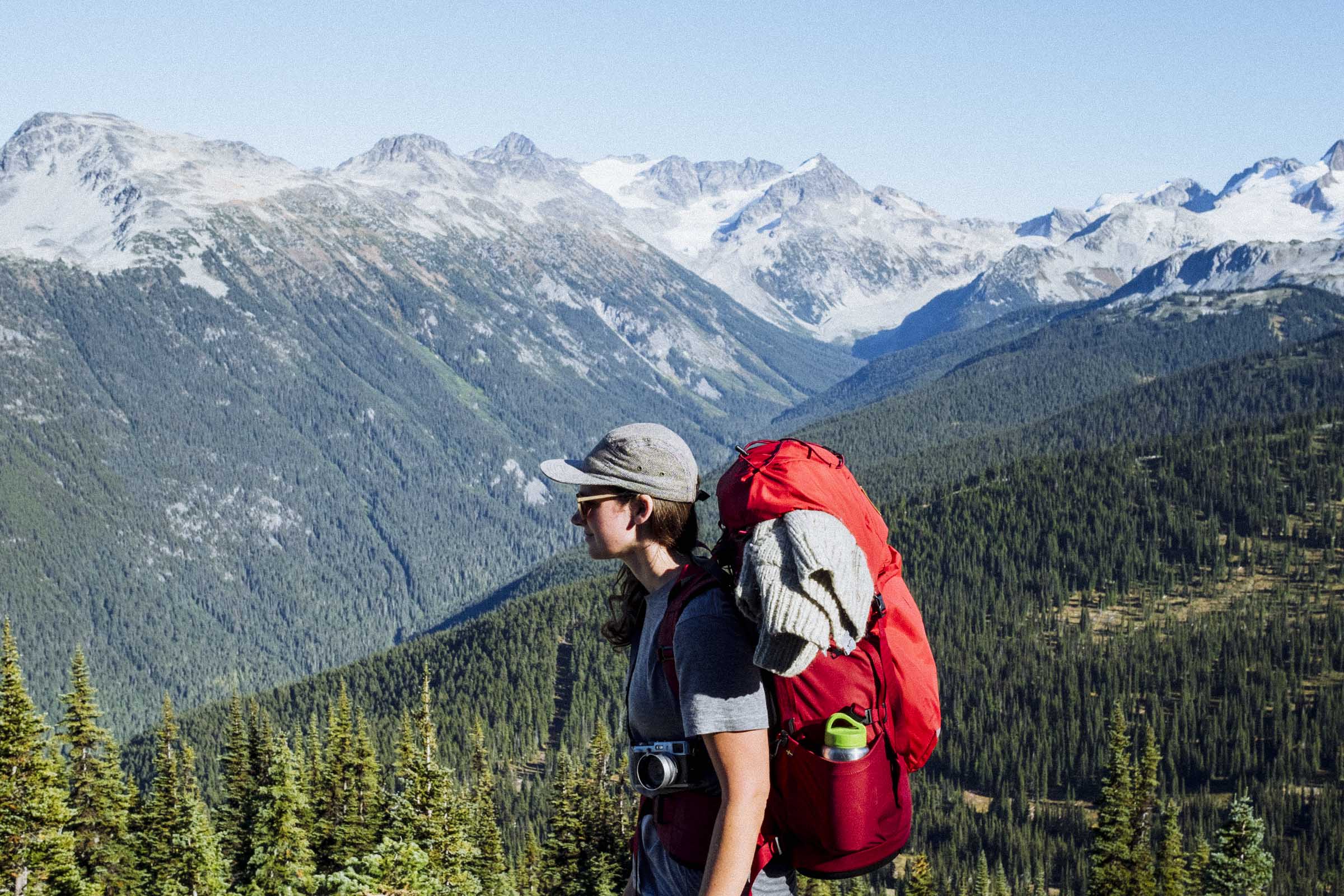

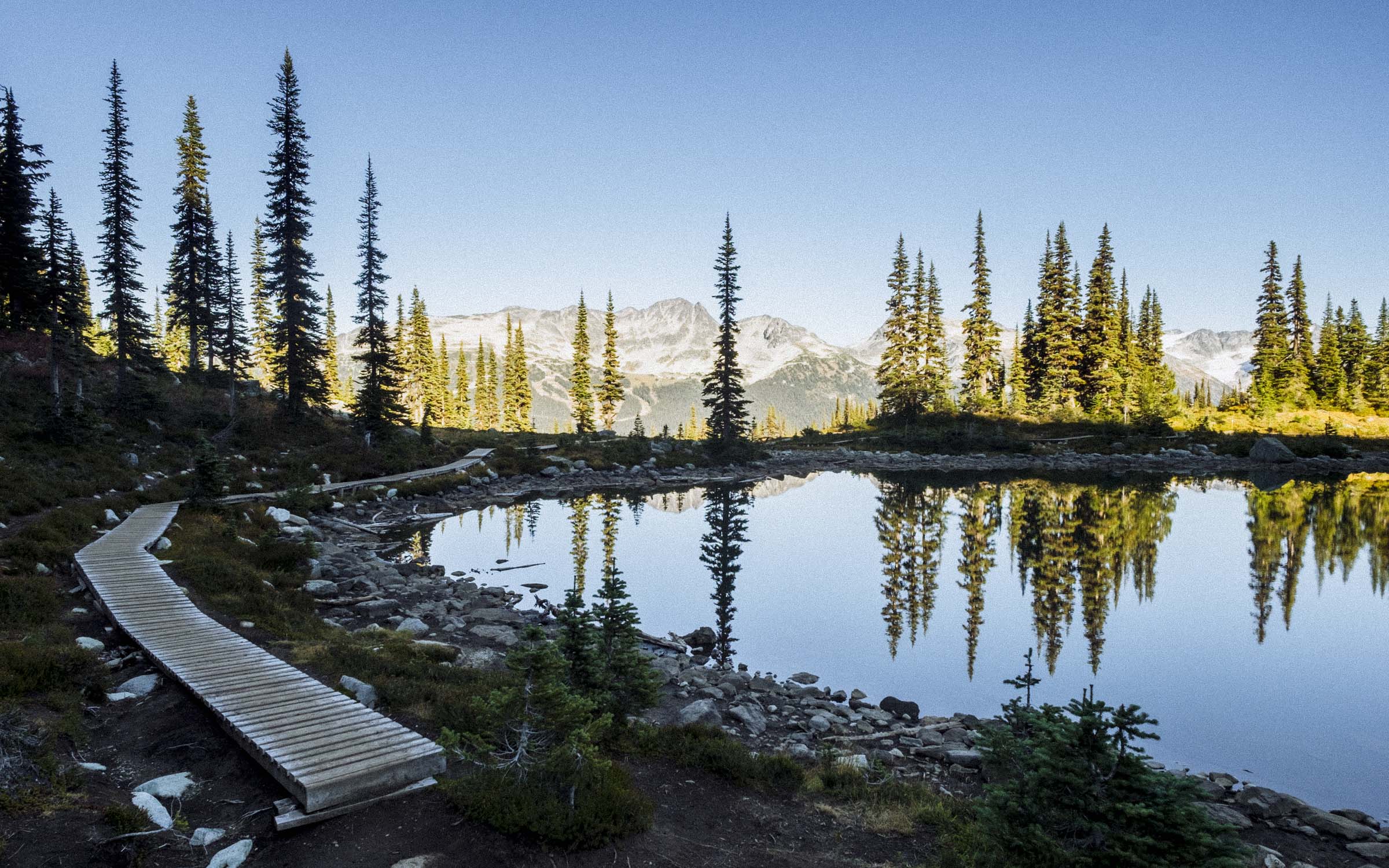
I have to admit that this final section of the High Note was steeper than I had anticipated. But it was pretty, and eventually you come to Harmony Ridge and look out over the bowl to the Roundhouse and you know you're in the homestretch. One last descent into whiskeyjack-filled Harmony Meadows and one last little climb back out and your ride back down is there, waiting.

